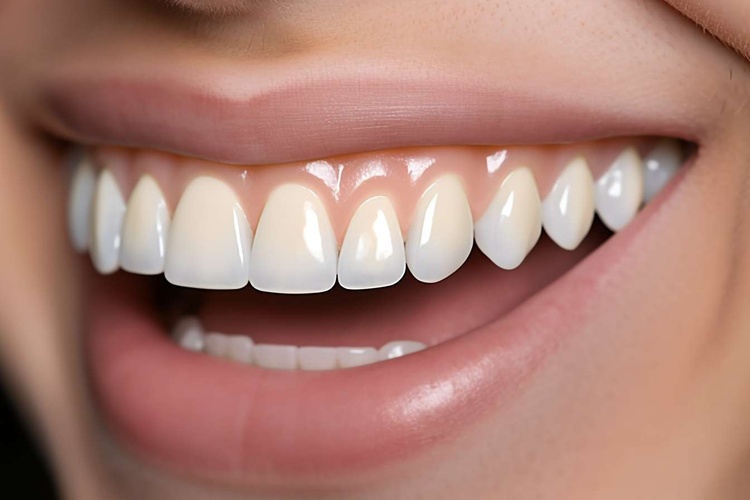Invisible Dentures Versus Traditional Dentures for Missing Teeth in the United States 2025: Key Insights and Comparisons
Modern denture options now offer greater comfort and a discreet appearance. This article explains what invisible (flexible) dentures are, compares them with traditional acrylic dentures, and outlines pros, cons, and practical considerations to help U.S. patients choose the best tooth-replacement option for 2025.

What Exactly Are Invisible Dentures?
Invisible dentures—also called flexible or clear dentures—are removable dental devices designed to replace missing teeth while closely resembling the natural look of gums and teeth. Unlike traditional dentures, which consist of hard acrylic materials, invisible dentures are crafted from flexible, translucent polymers. This flexibility enables the dentures to move more naturally with oral motions, offering both functional and aesthetic benefits.
These dentures integrate smoothly with surrounding teeth and gum tissue, rendering them nearly undetectable to others. Invisible dentures may be customized as partial sets (for replacing some missing teeth) or complete dentures that substitute all teeth in a dental arch.
Functionality of Traditional Dentures
Traditional dentures are prosthetic devices typically made from acrylic resin that rest directly on the gums and replace either some (partial denture) or all (complete denture) missing teeth. They stay in position through suction and sometimes the use of adhesives. Due to their rigid acrylic construction, traditional dentures do not flex with mouth movements, which may lead to discomfort or pressure points on the gums.
For many decades, traditional dentures have offered a mainstream, cost-effective method to restore appearance and function for those with missing teeth.
Comparing the Aesthetic Appeal
Invisible dentures excel in aesthetics because their translucent, flexible materials closely mimic natural gum tones and textures. Their design helps avoid the somewhat bulky or artificial appearance often associated with traditional acrylic dentures. This feature can significantly boost confidence by offering a more discreet tooth replacement option.
Conversely, traditional dentures tend to look more artificial due to the opaque acrylic base and less accurate color matching. Their rigidity can also make them feel and appear bulkier inside the mouth.
Differences in Comfort and Fit
Invisible dentures, with their flexible construction, provide a more adaptive fit that moves naturally with the muscles and contours of the mouth. This flexibility helps minimize common problems such as sore spots, gum irritation, and the sensation of having a foreign object inside the mouth.
In contrast, traditional dentures are rigid and often depend on adhesives or suction alone, which may cause gum soreness and pressure-related discomfort over time. Patients occasionally report challenges with long-term comfort, especially if the dentures are ill-fitting or if changes in the jawbone from resorption affect their stability.
Durability and Expected Lifespan
The flexible polymers in invisible dentures make them more resistant to cracking or chipping compared to the more brittle acrylic materials used in traditional dentures, which are vulnerable to fractures if dropped or stressed.
Although the material flexibility can enhance durability in invisible dentures, their overall lifespan also depends on diligent care and regular adjustments by dental professionals to accommodate changes in gum and jawbone shape over time.
Functional Advantages in Speech and Eating
Invisible dentures, thanks to their flexible design, better adapt to the oral movements involved in speaking and chewing. This adaptability can improve speech clarity and provide a more comfortable eating experience by reducing slipping or shifting.
Traditional dentures may shift during eating or speaking, often requiring adhesives and causing users to feel self-conscious in daily interactions. Furthermore, they can limit food choices due to concerns about stability.
Cost and Availability Considerations in the United States
Invisible dentures typically cost more than traditional dentures due to the advanced materials and manufacturing processes involved. Prices vary based on dental practice, the number of teeth replaced, and other factors. Additionally, the availability of invisible dentures is not universal across dental offices in the United States, which may limit access.
In contrast, traditional dentures are widely available and generally represent a more budget-friendly tooth replacement option, appealing to those with financial constraints or medical conditions that rule out surgical alternatives.
Appropriateness and Limitations of Invisible Dentures
Invisible dentures can replace multiple missing teeth or serve as full dentures. However, their suitability depends on individual factors such as oral health, the extent of tooth loss, and professional advice. Some limitations include:
- Higher expense compared to traditional dentures
- Materials that may stain more easily
- An adjustment period for speech and chewing typical of all denture types
- Limited access due to fewer providers offering these options in certain areas
Wider Context: Dentures and Related Prosthetics
It’s important to distinguish invisible dentures from invisible dental aligners, which are designed to straighten existing teeth rather than replacing missing ones. Both are removable, but serve different treatment purposes. For those seeking comprehensive tooth replacement, implant-supported dentures provide enhanced stability over both traditional and invisible dentures but require surgery and involve greater costs.
Practical Advice for Tooth Replacement in the United States in 2025
As consumers consider tooth replacement options in 2025, invisible dentures represent a modern choice focusing on aesthetics, comfort, flexibility, and a natural look. Nonetheless, they involve compromises concerning price and availability when compared to traditional dentures, which remain a practical and accessible alternative.
Dental experts advise thorough consultations to assess personal needs, oral conditions, and financial factors before selecting a denture type. Such professional guidance ensures choices that align with both health requirements and lifestyle preferences.
Disclaimer: Prices and availability of invisible and traditional dentures vary by region, dental provider, and current market trends in the United States. Consumers should verify details and consult qualified dental professionals before making decisions regarding tooth replacement.
Sources
- American Academy of Prosthodontics, Overview of Denture Types and Materials
- U.S. National Institute of Dental and Craniofacial Research: Dentures and Oral Health
- Latest Research in Dental Materials and Prosthetic Technology, 2025
- Park Dental Care Brooklyn, Dental Implants and Dentures Comparison
- Dayo Dental Network, Traditional Dentures vs Implant Overdentures Insights




